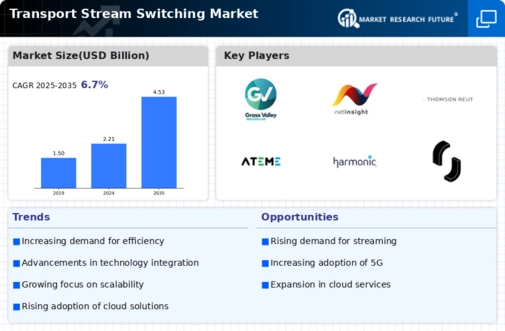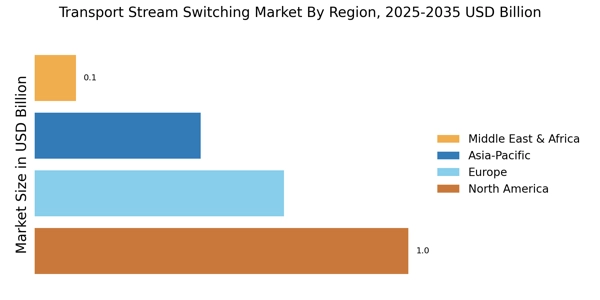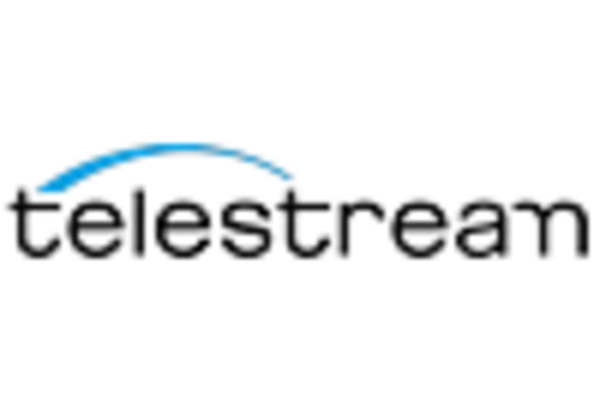Expansion of OTT Services
The expansion of Over-The-Top (OTT) services significantly influences the Transport Stream Switching Market. With the proliferation of platforms such as Netflix, Hulu, and Amazon Prime Video, the demand for efficient content delivery systems has escalated. Reports suggest that OTT services are expected to reach a market size of approximately 200 billion USD by 2026. This growth necessitates advanced transport stream switching solutions to manage diverse content formats and ensure optimal delivery. As more consumers shift from traditional cable to OTT services, the industry must adapt to these changes, driving further advancements in transport stream switching technologies.
Emergence of 5G Technology
The emergence of 5G technology presents a transformative opportunity for the Transport Stream Switching Market. With its promise of ultra-low latency and high-speed data transmission, 5G is set to revolutionize content delivery. The global rollout of 5G networks is anticipated to reach over 1 billion subscriptions by 2025, creating a substantial demand for transport stream switching solutions that can leverage this technology. Enhanced mobile broadband capabilities will enable broadcasters to deliver high-quality content to mobile devices, necessitating advanced switching technologies to manage increased data traffic. This shift could lead to significant growth in the transport stream switching market as providers seek to capitalize on the advantages offered by 5G.
Rising Demand for High-Quality Streaming
The increasing consumer demand for high-quality streaming services is a primary driver of the Transport Stream Switching Market. As audiences expect seamless viewing experiences, broadcasters and service providers are compelled to adopt advanced transport stream switching technologies. This shift is evident in the growing number of streaming platforms, which have surged to over 1,000 worldwide, indicating a robust market potential. The need for efficient switching solutions that can handle multiple streams simultaneously is paramount, as it enhances user experience and reduces latency. Consequently, investments in transport stream switching technologies are likely to rise, fostering innovation and competition within the industry.
Adoption of Advanced Broadcasting Standards
The adoption of advanced broadcasting standards, such as ATSC 3.0 and DVB-I, is a crucial driver for the Transport Stream Switching Market. These standards enhance the quality and efficiency of content delivery, necessitating sophisticated transport stream switching solutions. As broadcasters transition to these new standards, the demand for compatible switching technologies is likely to increase. The market for ATSC 3.0 is projected to grow significantly, with an estimated 100 million devices expected to support this standard by 2025. This transition not only improves viewer experience but also opens new revenue streams for broadcasters, further propelling the transport stream switching market.
Increased Investment in Sports Broadcasting
Increased investment in sports broadcasting is a notable driver of the Transport Stream Switching Market. Major sporting events, such as the Olympics and World Cup, attract millions of viewers, necessitating high-quality broadcasting solutions. The sports broadcasting market is projected to reach approximately 80 billion USD by 2025, highlighting the financial incentives for broadcasters to invest in advanced transport stream switching technologies. These technologies enable the seamless integration of multiple camera feeds and real-time data, enhancing viewer engagement. As competition intensifies among broadcasters to deliver superior sports content, the demand for efficient transport stream switching solutions is expected to rise.


















Leave a Comment